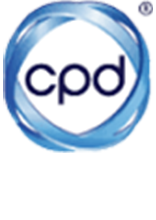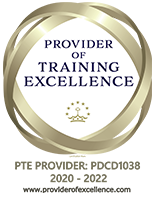As a makeup artist, you’ll be tasked with creating amazing looks for your clients - who will come in all shapes, sizes and skin types. Around 800,000 Australians have what you might call persistent eczema, so it’s something you’ll need to know how to approach.
What should you look for in cosmetics if you have eczema?
As eczema-related makeup video tutorials show us, the cosmetics you use need to be gentle to avoid flare-ups for something caused by excess oil production by the skin. So, with this in mind, here we show you a professional makeup artist should prepare this type of skin for makeup application.
With eczema, what should I apply before makeup to protect my skin?
That’s what we cover now in this section: how eczema (a.k.a. Atopic dermatitis) can be supported with the right preparation. So, without further ado, here are our 5 eczema makeup tips.
-
Tip #1 - Make Sure You Have Eczema-friendly Products In Your Kit
The first thing to ensure is that you have eczema-friendly cosmetics in your kit. That means avoiding products that contain preservatives and fragrances. Also, avoid glycolic acid as an ingredient, as it has a habit of drying out the skin - which will essentially lead to more oil being produced and your client’s eczema becoming aggravated.
More about eczema-friendly makeup can be found here.
-
Tip #2 - Create Your Base Layer With Moisturiser
As you’ll see by watching any good makeup demo on YouTube, the application of a base layer is an important part of anyone’s makeup prep. When dealing with eczema-prone skin, a makeup artist typically uses a good moisturiser containing ingredients like ceramides and shea butter.
While hyaluronic acid in most products is bad for eczema, it can help in a moisturiser, as it allows moisture to be provided without irritation. If the moisturiser in question includes SPF protection, all the better!
-
Tip #3 - Use Your Fingers to Apply, Not Brushes
As an online course in beauty will show, using clean fingers to apply makeup for someone with eczema is actually a good idea. Why’s that? Well, bacteria often hide away in the bristles of used brushes - even when they’re maintained properly.
Also, try using a dabbing technique, rather than a spreading action, as it will stop bacteria from being spread around. Just be sure that your fingers are super-clean and free of dirt first.
-
Tip #4 - Use a Concealer to Correct Colour
When applying foundation, you do so to provide an even colouring across the face. However, when a client has eczema, red patches are not uncommon, so you need to turn to your colour wheel to see which tone will even this out for a natural look.
Interestingly, the complementing colour for redness that a makeup artist would use turns out to be green which is on the other side of the colour wheel. Have a range of concealers in this colour range, and you’ll be able to provide a consistent look.
-
Tip #5 - Use a Makeup Remover That’s Nice & Gentle
Lastly, we look at how to remove any existing makeup your client might have on - as they won’t often turn up makeup-free. Again, you should be careful about the products you use; the same applies to makeup removers.
So, be sure to have facial cleansers in your kit that are free of soaps, preservatives, fragrances and formaldehyde. Otherwise, you might cause irritation before you’ve even started.
Follow these steps and ensure that you achieve the desired results, meaning that your makeup artist's reputation is protected. To find out more about eczema, visit Eczema Association Australasia’s website.
Train For a Rewarding Career With Beauty Courses Online
We’ve talked about one of the aspects of makeup application you’ll need to master as a professional makeup artist. The good news is that learning those skills is more convenient and affordable than ever, thanks to video-based, CPD-endorsed OCA short courses online.
Our training is created in conjunction with top experts, can be taken at a pace that suits you and comes with 1-to-1 tutor support, 7 days a week! For more information about this, look at our website, www.onlinecoursesaustralia.edu.au or our student study demo that clearly illustrates our next-level learning experience.
However, to get in touch with us to have any questions you might have answered, call us on 1300 611 404 or email us at [email protected]. Rest assured that as soon as we hear from you, we’ll reply as soon as we possibly can.





















